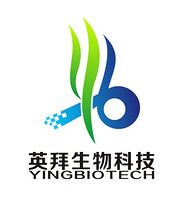卵巢癌突變PCR芯片 Ovarian Cancer Mutation PCR Array

卵巢癌突變PCR芯片 Ovarian Cancer Mutation PCR Array
卵巢癌突變PCR芯片 Ovarian Cancer Mutation PCR Array
運(yùn)費(fèi) ¥0.00
| 地區(qū): | 上海 |
| 簡介: | Ovarian Cancer Mutation PCR Array |
| 提供商: | SAB |
| 服務(wù)名稱: | Ovarian Cancer Mutation PCR Array |
The most important BRAF mutation in ovarian cancer leads to increased kinase activity, the p. V600E mutation. CTNNB1: 9 Assays The most frequently detected CTNNB1/beta-catenin mutations result in abnormal signaling in the WNT signaling pathway. The mutated codons are mainly several serine/threonine residues targeted for phosphorylation by GSK-3beta. ERBB2: 2 Assays The most frequently identified ERBB2 activating mutations cluster in the ERBB2 kinase domain region. FOXL2: 1 Assay This mutation lies in wing 2 of the forkhead domain, a divergent component of the domain's secondary structure with unknown function, but the mutation does seem to inhibit the protein's pro-apoptotic function. GNAS: 1 Assay Mutations in this gene result in pseudohypoparathyroidism type 1a (PHP1a), which has an atypical autosomal dominant inheritance pattern requiring maternal transmission for full penetrance. KIT: 3 Assays The most frequently identified KIT gain-of-function mutations include the D816V point mutation, the exon 11 (juxtamembrane domain) deletion and point mutations, an exon 9 insertion mutation, and exon 13 point mutations. KRAS: 10 Assays The mutation assays include the most frequently occurring mutations in KRAS codons 12, 13, and 61. Mutations at these positions result in reduced intrinsic GTPase activity and/or cause KRAS to become unresponsive to RasGAP. NRAS: 1 Assay The most important NRAS mutation in ovarian cancer occurs at codon 12. PIK3CA: 7 Assays The most frequently occurring PIK3CA mutations mainly belong to two classes: gain-of-function kinase domain activating mutations and helical domain mutations that mimic activation by growth factors. PTEN: 3 Assays The most commonly detected PTEN loss-of-function mutations are due to either truncation (p.R233* and p.R130*) or point mutations causing phosphatase inactivation (p.R130 and p.R173 mutations). TP53: 45 Assays The most frequently detected somatic mutations in TP53 are largely composed of DNA-binding domain mutations which disrupt either DNA binding or protein structure. |








